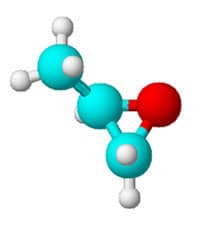
How It’s Used
Propylene Oxide (PrO or PO) is utilized primarily as a chemical intermediate in the manufacture of items such as flexible and rigid foams, elastomers, coatings, adhesives, and injection moldings—all of which can be seen in a variety of products, including tub-shower combinations, gasoline tanks, and boat hulls. Among the top 50 chemicals produced in the world, PrO is a colorless, low-boiling and highly volatile liquid with a sweet, ether-like odor. The compound is highly flammable and reactive, and storage and unloading areas must be appropriately designed and monitored.
Derivatives of propylene oxide are used in certain foods, pharmaceuticals, and cosmetics. They are also used in defoamers, oil-field chemicals, lubricants, greases, wetting agents, latex paints, and water scavengers.
Propylene Oxide is employed—under EPA FIFRA regulations—for the fumigation of nutmeats, spices, certain dried fruits, cacao bean and powder, cosmetics, and several non-food materials.
Occupational Health/Toxicology
Excerpt from NIOSH Pocket Guide to Chemical Hazards relating to propylene oxide. Detailed report on PrO from the UN’s Food and Agricultural Organization. [pdf file]
The routes of exposure to propylene oxide are inhalation, ingestion, and incidental dermal exposure. Consumers may be exposed through ingestion of propylene oxide residues in foods resulting from its use as an indirect food additive or by contact with consumer products containing propylene oxide. Consumer items with the highest concentrations of PrO include automotive and paint products.
Full record from Hazardous Substances Data Bank (HSDB), a database provided by the US National Library of Medicine.
Monitoring Instrumentation
Check out Interscan’s full line of propylene oxide gas detection/gas monitoring instrumentation.
